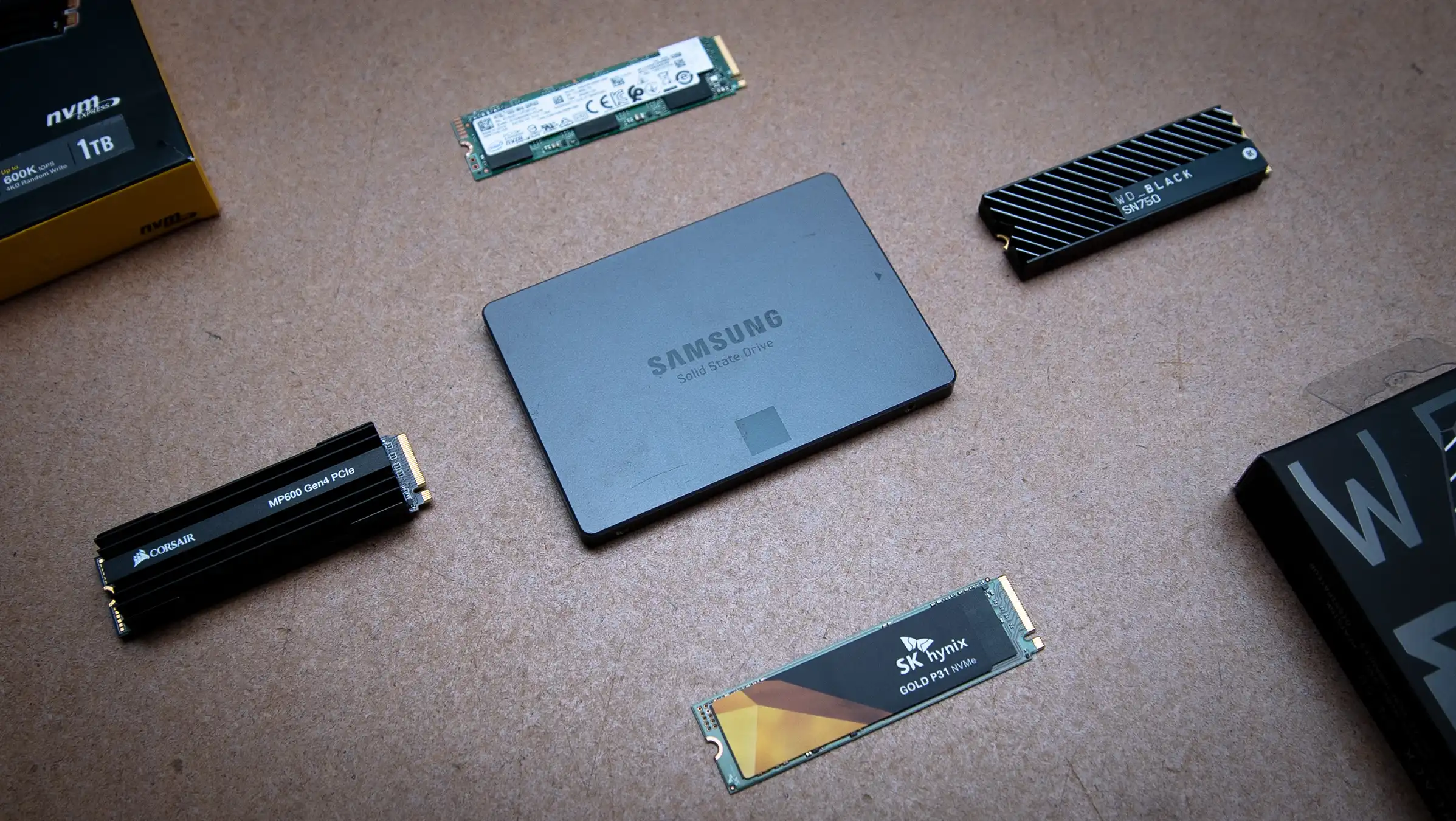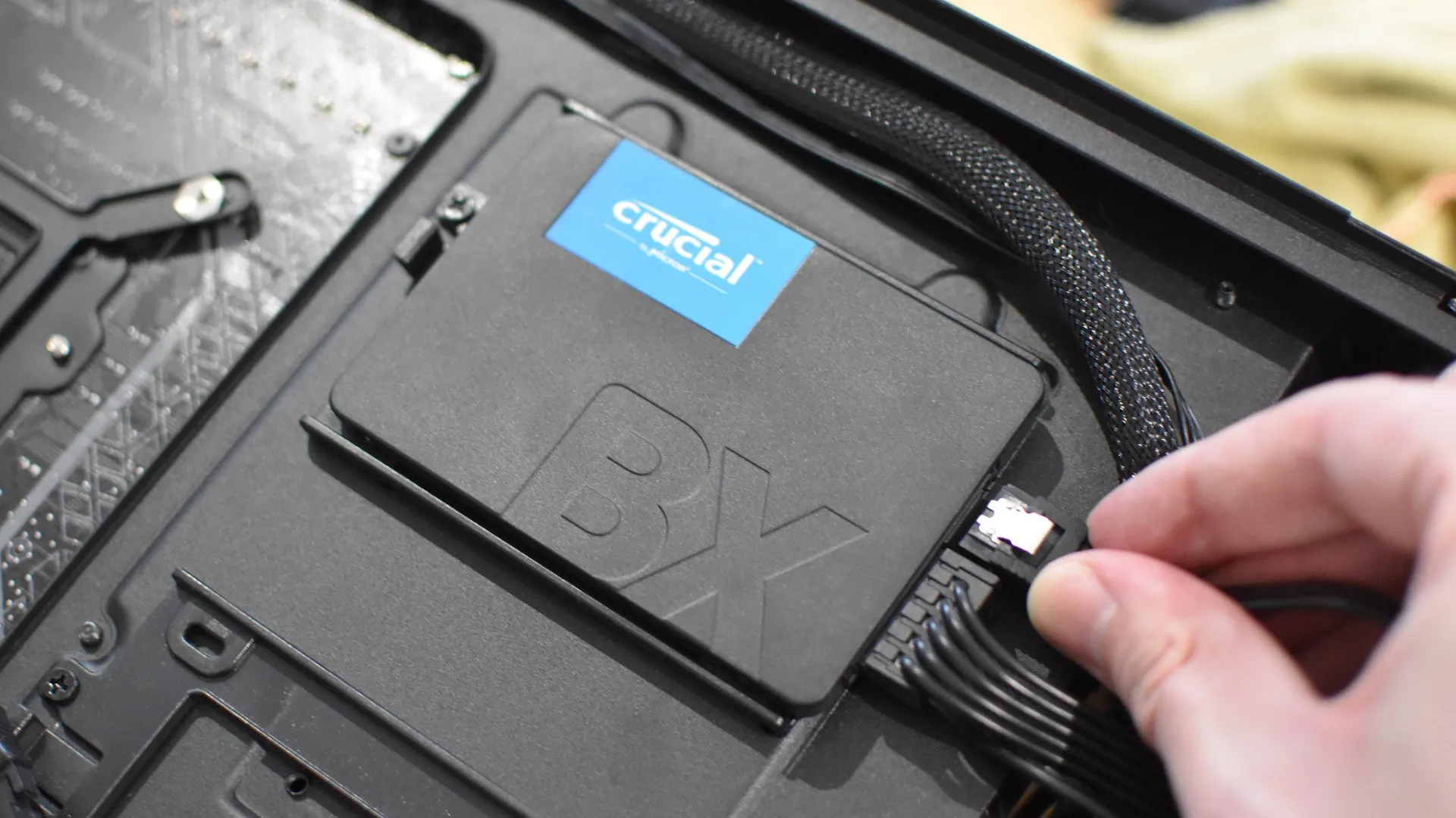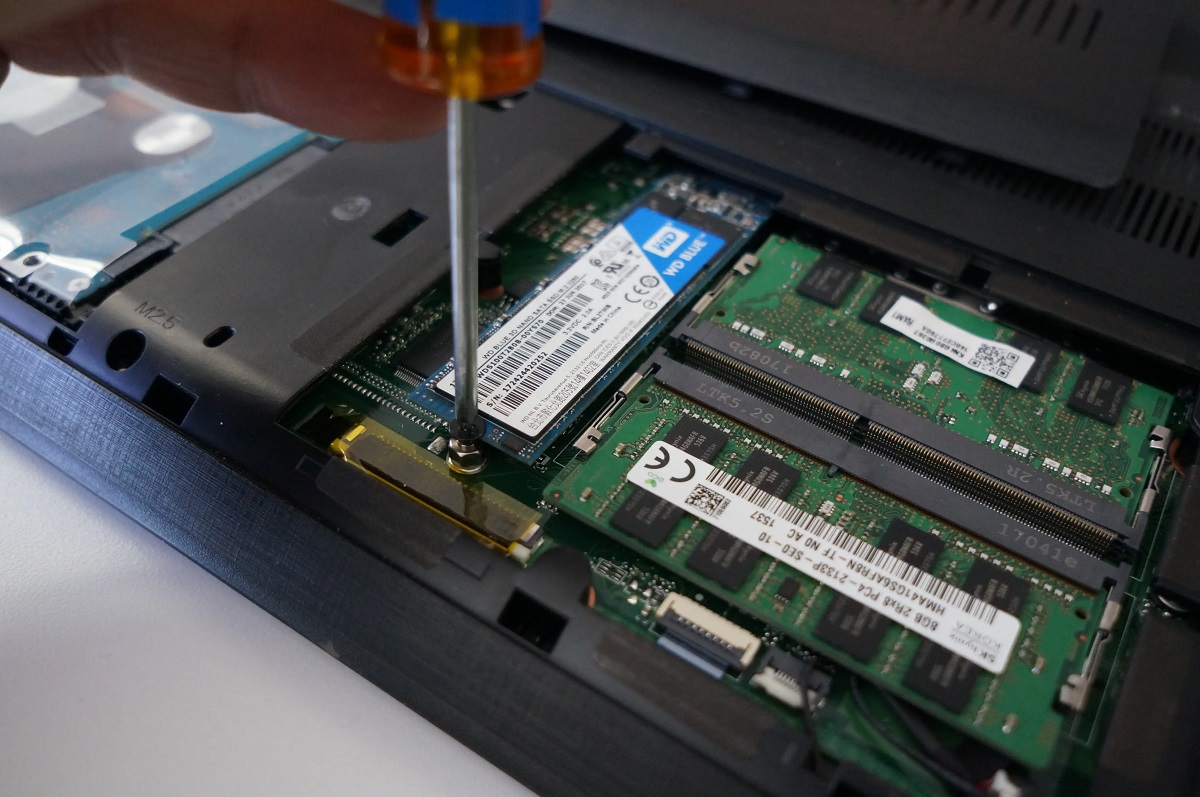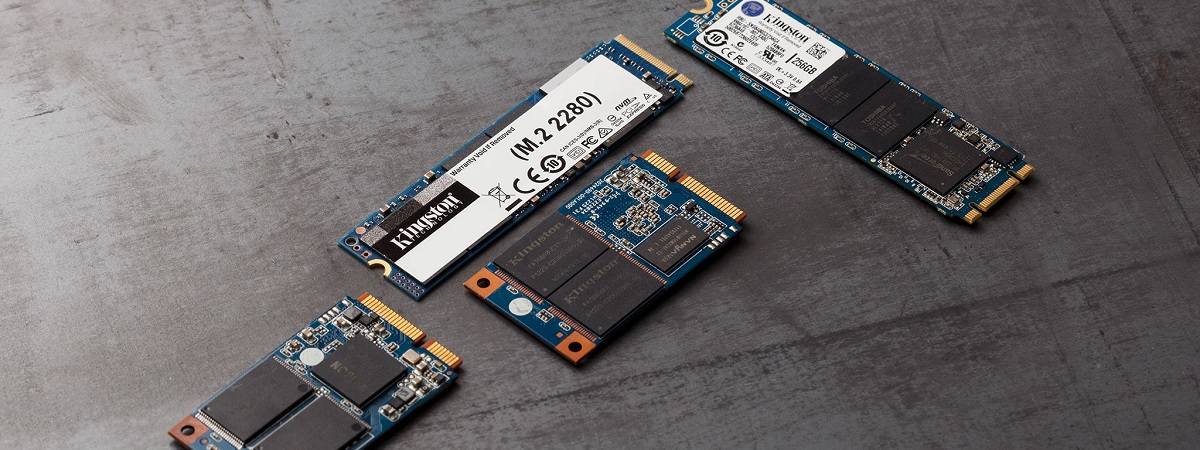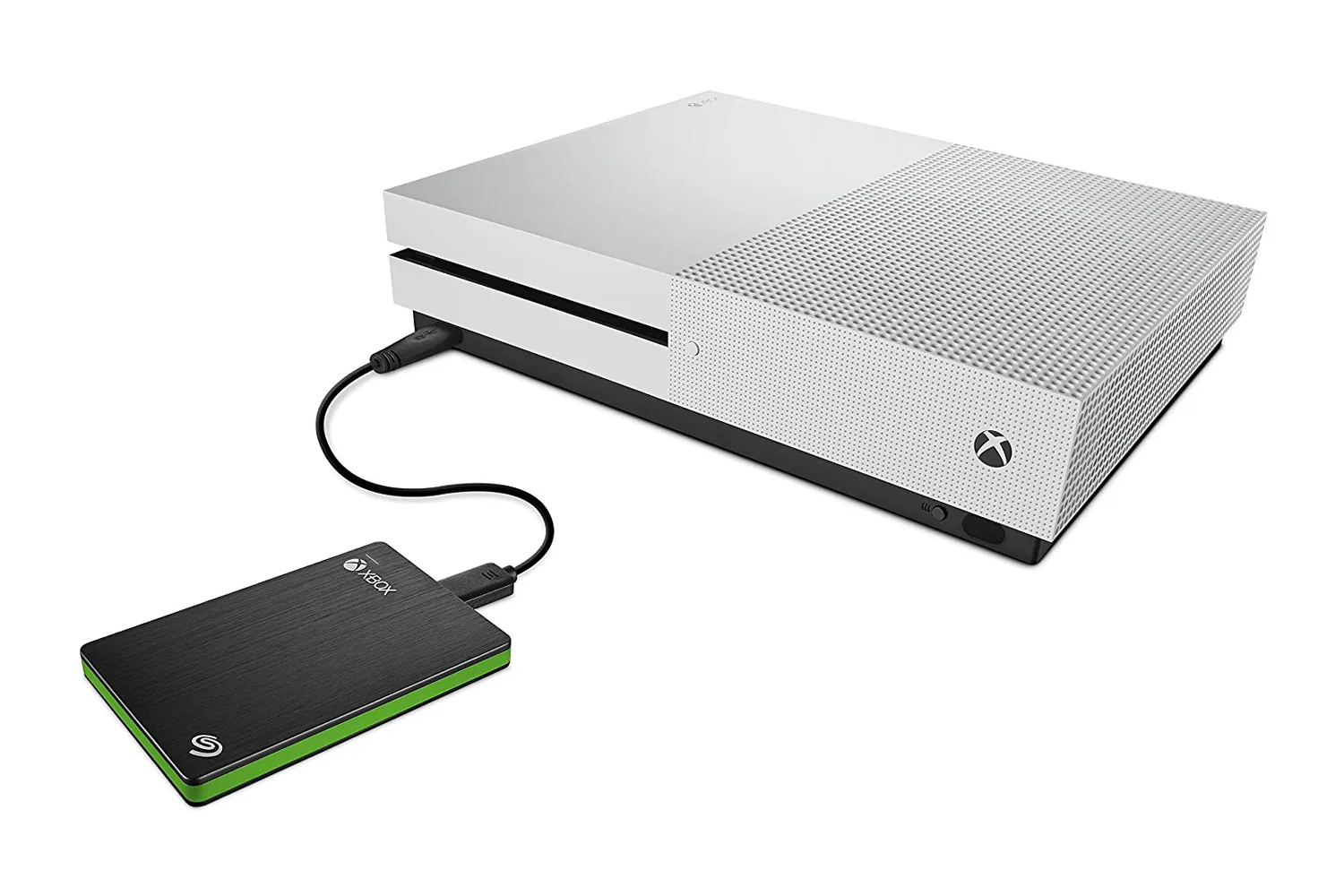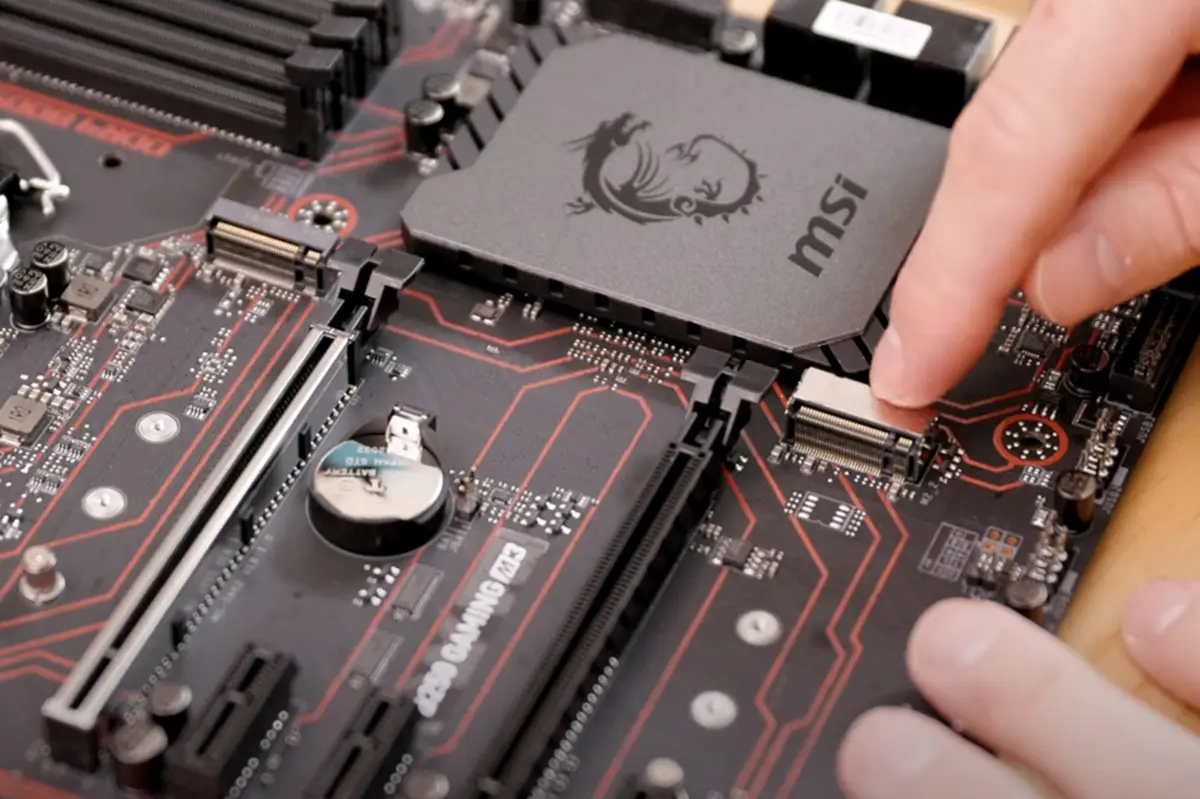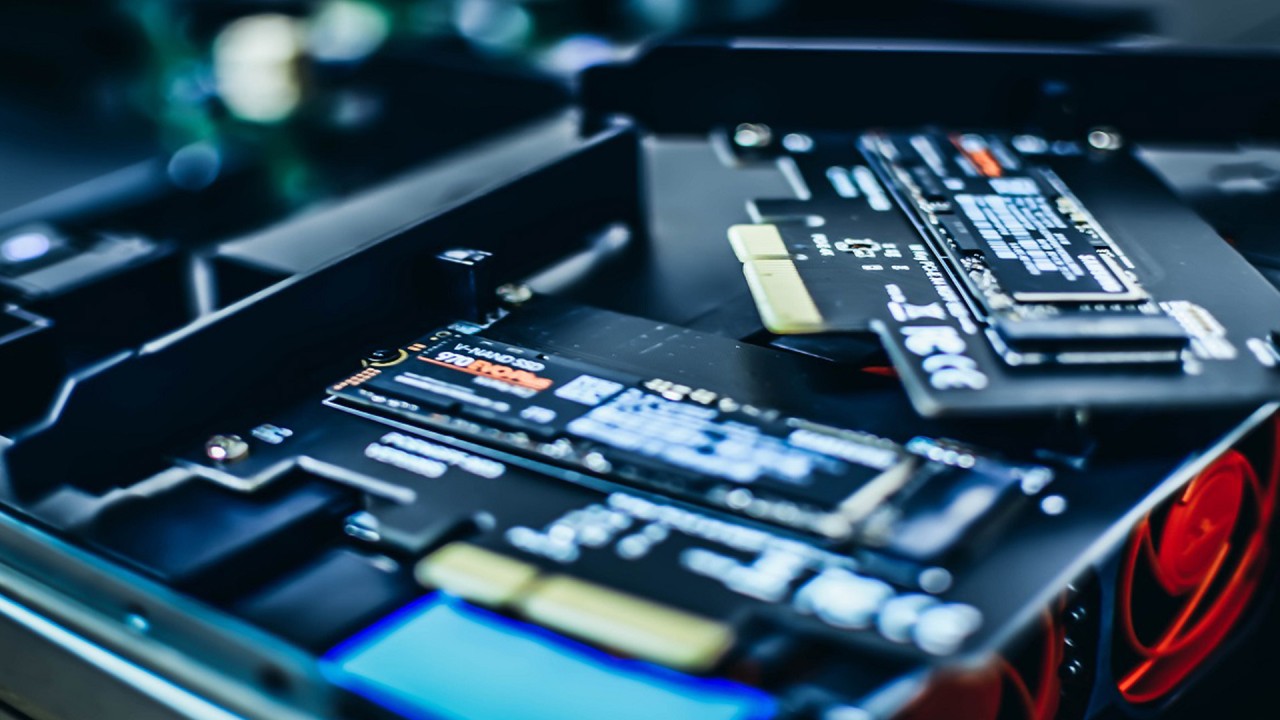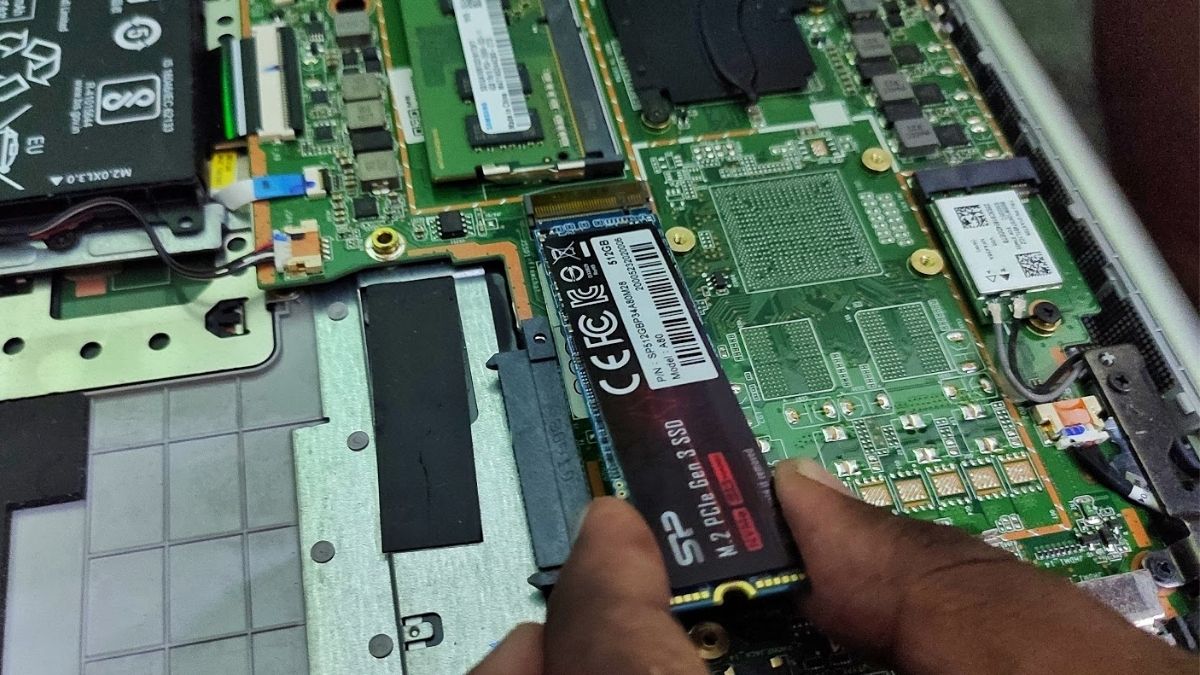What is an M.2 SSD?
An M.2 SSD, also known as a Next Generation Form Factor (NGFF) SSD, is a solid-state drive that is designed to be smaller and more compact than traditional hard disk drives (HDDs). It is named after its M.2 connector, which is used to interface with the motherboard of a computer.
Unlike HDDs, which rely on spinning disks for data storage, M.2 SSDs use flash memory to store and retrieve data. This allows for faster access times, lower power consumption, and quieter operation. M.2 SSDs are available in different sizes and form factors, including 2242, 2260, and 2280, which represent the width and length measurements of the drive in millimeters.
M.2 SSDs are commonly used in laptops, ultrabooks, and small form factor desktops due to their smaller size and ability to fit into tight spaces. They are also increasingly being used in gaming PCs and high-performance workstations to take advantage of their blazing-fast speeds.
One of the key advantages of M.2 SSDs is their speed. They can deliver significantly faster read and write speeds compared to traditional HDDs, making them ideal for tasks that require quick data access, such as booting up the operating system, launching applications, and transferring large files.
Furthermore, M.2 SSDs support the NVMe (Non-Volatile Memory Express) protocol, which is specifically designed for SSDs and offers even faster performance compared to SATA-based SSDs. NVMe utilizes the PCIe (Peripheral Component Interconnect Express) interface to achieve faster data transfer rates, making M.2 SSDs the preferred choice for users seeking maximum speed.
Overall, M.2 SSDs offer a compelling combination of speed, compactness, and power efficiency. They have become the go-to storage option for users who value performance and want faster and more responsive computing experiences. Whether you’re a gamer, a professional, or a casual user, upgrading to an M.2 SSD can significantly enhance your system’s performance and give you a noticeable boost in speed.
The Benefits of M.2 SSDs
M.2 SSDs offer several advantages over traditional HDDs and even other types of solid-state drives. These benefits make them a popular choice among computer enthusiasts and professionals who require fast and reliable storage solutions. Let’s explore the key benefits of M.2 SSDs:
- Speed: One of the main advantages of M.2 SSDs is their exceptional speed. Compared to HDDs, which rely on mechanical parts, M.2 SSDs use flash memory chips to store and retrieve data. This results in significantly faster data transfer rates and quicker access times, leading to snappier system performance and reduced load times for applications and files.
- Compact Form Factor: M.2 SSDs are incredibly small and lightweight, allowing them to fit into tight spaces within laptops, ultrabooks, and small form factor desktops. Their compact size also makes them ideal for use in thin and light devices, where space is at a premium.
- Power Efficiency: M.2 SSDs consume less power compared to traditional HDDs, which can help prolong battery life in laptops and other portable devices. The lower power consumption also translates to cooler operation, reducing the need for additional cooling mechanisms.
- No Noise or Vibration: Since M.2 SSDs lack moving parts, they operate silently and produce minimal vibration. This makes them ideal for users who value a quiet computing environment and want to avoid the noise generated by traditional HDDs.
- Reliability: M.2 SSDs are more resistant to shock, vibration, and physical damage compared to HDDs. Due to their lack of moving parts, they are less susceptible to mechanical failure, resulting in increased long-term reliability and durability.
- Compatibility: M.2 SSDs are compatible with a wide range of devices, including desktop computers, laptops, ultrabooks, and even some tablets. They use the standard M.2 connector, which is found on most modern motherboards. However, it’s important to check the specifications of your device to ensure compatibility before upgrading.
With their impressive speed, compact form factor, power efficiency, reliability, and compatibility, M.2 SSDs have become the storage solution of choice for many users. Whether you’re a professional who needs speedy data access, a gamer looking for reduced load times, or a casual user seeking a more responsive computing experience, upgrading to an M.2 SSD can bring a wide range of benefits and greatly enhance your overall system performance.
Comparing M.2 SSD Speeds to Traditional HDDs
When it comes to speed, M.2 SSDs are in a league of their own compared to traditional hard disk drives (HDDs). The difference in performance is significant and can greatly impact the overall user experience. Let’s take a closer look at how M.2 SSD speeds compare to those of HDDs:
1. Read and Write Speeds: M.2 SSDs can achieve read and write speeds that are multiple times faster than those of HDDs. While HDDs typically have read and write speeds in the range of 100-200 MB/s, M.2 SSDs can reach speeds of several gigabytes per second (GB/s). This means that tasks such as booting up the operating system, opening applications, and transferring large files are much quicker with an M.2 SSD.
2. Random Access Times: HDDs have relatively slow random access times, which is the time it takes for the drive to locate and retrieve a specific piece of data. M.2 SSDs, on the other hand, have near-instantaneous random access times. This makes a noticeable difference in the responsiveness of the system, as applications and files can be accessed and loaded much faster.
3. Improved Game Loading Times: Gamers can benefit greatly from the fast loading times that M.2 SSDs offer. Games with large file sizes and complex textures can take a while to load on a traditional HDD. With an M.2 SSD, game loading times are significantly reduced, allowing gamers to jump into their favorite games faster and spend more time playing rather than waiting.
4. Multitasking Performance: M.2 SSDs excel in multitasking scenarios. With their fast read and write speeds, they can handle multiple simultaneous read and write operations with ease. This means that you can run resource-intensive applications, transfer files, and stream media without experiencing significant performance degradation.
5. Energy Efficiency: M.2 SSDs are not only faster but also more energy-efficient compared to HDDs. Their lower power consumption means they require less energy to operate, resulting in increased battery life for laptops and reduced electricity costs for desktop computers. Additionally, the reduced heat generated by M.2 SSDs contributes to a cooler and quieter system environment.
Overall, the speed advantage of M.2 SSDs over traditional HDDs is undeniable. Whether you’re a professional who needs speedy data access, a gamer seeking faster game loading times, or a multitasker who values responsiveness, upgrading to an M.2 SSD can provide a significant performance boost and transform your computing experience.
Understanding M.2 SSD Speed Ratings
When shopping for an M.2 SSD, you may come across different speed ratings specified in the product descriptions. Understanding these speed ratings is crucial in determining the performance capabilities of the drive. Here’s what you need to know:
1. Sequential Read and Write Speeds: The sequential read and write speeds indicate how fast the M.2 SSD can transfer data in a sequential manner. For example, a drive with a read speed of 3500 MB/s and a write speed of 2500 MB/s can read data from the drive at a rate of 3500 megabytes per second and write data to the drive at a rate of 2500 megabytes per second. These speeds are relevant for tasks such as copying large files or performing disk-intensive operations.
2. Random Read and Write Speeds: The random read and write speeds measure the drive’s ability to access and transfer small, random chunks of data. These speeds are crucial for fast application launches, quick system startup, and smooth multitasking. The random read and write speeds are often measured in Input/Output Operations Per Second (IOPS) and indicate how many operations the drive can perform within a specified time frame.
3. NVMe Protocol: M.2 SSDs may also mention support for the NVMe (Non-Volatile Memory Express) protocol. NVMe is a high-performance protocol designed specifically for SSDs, utilizing the PCIe (Peripheral Component Interconnect Express) interface to provide faster data transfer rates compared to traditional SATA-based SSDs. M.2 SSDs that support NVMe can achieve even higher read and write speeds, resulting in improved overall performance.
4. Cache: Some M.2 SSDs feature a cache, which is a small portion of the drive’s storage capacity used for temporarily storing frequently accessed data. This cache can enhance the drive’s performance by accelerating data transfers and improving responsiveness. The size and type of cache can vary among different M.2 SSD models, and larger caches can often lead to better performance.
5. Considerations for Real-World Performance: While speed ratings are important, it’s worth noting that real-world performance can be affected by various factors, including the system’s hardware configuration, operating system efficiency, and the specific tasks being performed. It’s recommended to read reviews and benchmarks that evaluate the actual performance of M.2 SSDs in real-world scenarios to get a better understanding of their capabilities.
By understanding the different speed ratings of M.2 SSDs, you can make an informed decision when selecting a drive that meets your performance requirements. Whether you need high sequential speeds for data-intensive tasks or faster random access times for quicker application loading, choosing an M.2 SSD with the appropriate speed ratings will ensure a smooth and responsive computing experience.
Real-World Performance Boost with M.2 SSDs
M.2 SSDs offer more than just impressive speed on paper. In real-world scenarios, upgrading to an M.2 SSD can deliver a noticeable performance boost and transform your computing experience. Let’s explore the specific ways in which M.2 SSDs enhance real-world performance:
1. Faster Boot Times: One of the most significant advantages of an M.2 SSD is its ability to dramatically reduce boot times. With traditional HDDs, the system takes longer to access and load the operating system files. In contrast, an M.2 SSD’s fast read speeds allow for quick retrieval of system files, resulting in near-instantaneous boot times. You’ll be up and running in seconds, saving valuable time every time you start your computer.
2. Snappier Application Launches: Launching applications becomes a breeze with an M.2 SSD. The speedy read and write speeds of the SSD allow for swift retrieval and storage of application files. Whether you’re launching heavy design software, video editing tools, or resource-intensive games, you’ll experience shorter load times and a smoother transition into the application interface.
3. Improved File Transfer Rates: Transferring files between drives or external devices becomes significantly faster with an M.2 SSD. The high sequential read and write speeds of the drive ensure quick and efficient data transfer, saving you time when working with large files or performing backup operations. Whether you’re moving multimedia content, working with complex projects, or transferring vast amounts of data, the increased speed of an M.2 SSD will streamline your workflow.
4. Enhanced Multitasking Performance: M.2 SSDs excel in multitasking scenarios, allowing you to run multiple programs simultaneously without experiencing significant performance degradation. With faster read and write speeds, M.2 SSDs handle multitasking with ease, making it possible to switch between applications effortlessly. You’ll be able to edit documents, browse the internet, stream media, and perform other tasks simultaneously without noticeable slowdowns.
5. Reduced Game Loading Times: Gamers can enjoy faster loading times with an M.2 SSD. Games with large file sizes and intricate graphics can take a considerable amount of time to load on traditional HDDs. However, an M.2 SSD’s high read speeds ensure that game assets load swiftly, allowing you to jump into your favorite games faster and experience minimal waiting time. It significantly enhances the overall gaming experience and gives you a competitive edge in online multiplayer games.
In sum, the real-world performance boost provided by an M.2 SSD is tangible and immediately noticeable. From faster boot times and snappier application launches to improved multitasking and reduced game loading times, upgrading to an M.2 SSD can transform your computing experience and make everyday tasks more enjoyable and efficient.
Factors that Affect M.2 SSD Speed
While M.2 SSDs are known for their fast speeds, several factors can influence their overall performance. Understanding these factors will help you optimize your M.2 SSD’s speed and get the most out of your storage solution. Let’s explore the key factors that affect M.2 SSD speed:
1. NAND Flash Memory Type: The type of NAND flash memory used in an M.2 SSD can impact its performance. SLC (Single-Level Cell) and MLC (Multi-Level Cell) NAND flash memory tend to offer faster speeds and better endurance compared to TLC (Triple-Level Cell) or QLC (Quad-Level Cell) NAND flash memory. However, advancements in technology and controller design have made TLC and QLC NAND flash memory more capable and affordable in recent years.
2. Capacity: The capacity of an M.2 SSD can influence its speed. Generally, larger capacity SSDs tend to have faster speeds compared to their lower-capacity counterparts. This is because larger capacity drives have more memory channels, allowing for more data to be read and written simultaneously. However, it’s important to note that the performance difference between different capacities may not be significant for regular everyday tasks.
3. Controller: The controller is a crucial component in an M.2 SSD that manages the flow of data between the NAND flash memory and the system. A high-quality controller plays a vital role in maximizing the speed and overall performance of the drive. Different controllers have different capabilities, so it’s essential to choose an M.2 SSD with a reputable controller known for its performance and reliability.
4. Interface: The interface through which the M.2 SSD connects to the motherboard can impact its speed. M.2 SSDs can use different interfaces, such as SATA (Serial ATA) and PCIe (Peripheral Component Interconnect Express). PCIe-based M.2 SSDs generally offer faster data transfer rates compared to SATA-based ones. If your system supports PCIe Gen4 or Gen3, opting for a PCIe-based M.2 SSD can provide a significant speed boost.
5. System Configuration: The overall configuration of your system can also affect the speed of an M.2 SSD. Factors such as the CPU, RAM, motherboard capabilities, and storage interfaces (e.g., PCIe slots) can impact the speed at which data is processed and transferred. Keeping your system’s hardware up to date and ensuring that all components are compatible can help optimize the speed and performance of your M.2 SSD.
6. Temperature and Thermals: Heat can impact the performance of an M.2 SSD. When an M.2 SSD reaches high temperatures, it may throttle its speed to prevent overheating. Ensuring proper airflow and cooling within your system can help maintain optimal operating temperatures and prevent potential speed reductions due to thermal throttling.
By considering these factors and making informed choices, you can optimize the speed and performance of your M.2 SSD. Choosing a reliable brand, using the appropriate interface, keeping your system cool, and ensuring compatibility with your hardware will help you get the most out of your M.2 SSD’s speed and elevate your overall computing experience.
Tips for Maximizing M.2 SSD Speeds
If you have an M.2 SSD or are considering upgrading to one, there are several tips and practices you can follow to ensure you maximize its speed and performance. Implementing these tips will help you make the most out of your M.2 SSD’s capabilities. Here are some recommendations to help you do just that:
1. Ensure Proper Installation: Ensure that your M.2 SSD is properly installed in the M.2 slot on your motherboard. Check the manufacturer’s instructions or consult the user manual to ensure correct installation and secure connection. A loose or improperly connected M.2 SSD can impact its speed and performance.
2. Enable AHCI/RAID Mode: In the BIOS settings of your computer, make sure you have the appropriate storage mode enabled. For optimal performance, choose either AHCI (Advanced Host Controller Interface) mode or RAID (Redundant Array of Independent Disks) mode, depending on your usage scenario and specific requirements.
3. Keep Your Drive Healthy: Regularly perform maintenance tasks to keep your M.2 SSD healthy. This includes keeping the drive firmware up to date, monitoring drive health using software provided by the drive manufacturer, and performing periodic disk checks and optimizations using built-in tools or third-party software.
4. Avoid Overfilling the Drive: To maintain optimal performance, avoid filling your M.2 SSD to its maximum capacity. Leave some free space on the drive to allow the SSD controller to perform wear-leveling and garbage collection efficiently. This will help prevent performance degradation over time.
5. Use the Correct Storage Interface: If your system supports it, use the PCIe (Peripheral Component Interconnect Express) interface for the M.2 SSD, as it provides faster data transfer rates compared to the SATA (Serial ATA) interface. Utilizing the appropriate interface will help maximize the speed and performance of your M.2 SSD.
6. Enable XMP Profiles: If your motherboard and RAM support it, enable the XMP (eXtreme Memory Profile) feature in the BIOS. This will allow your RAM to run at its rated speed, providing faster data access and improved overall system performance.
7. Manage Power Settings: Adjust your system’s power settings to ensure maximum performance when using the M.2 SSD. You can set the power plan to “High Performance” in the Windows power settings or adjust specific settings related to hard drive sleep or power saving modes to prevent any performance throttling.
8. Regularly Update Drivers: Keep all the drivers for your M.2 SSD and other system components up to date. Check the manufacturer’s website or use appropriate software to ensure that you have the latest driver versions installed. Updated drivers often include performance improvements and bug fixes that can boost the speed and stability of your M.2 SSD.
By following these tips, you can optimize the speed and performance of your M.2 SSD. Remember to check the manufacturer’s recommendations and consult your system’s user manual for specific instructions and settings. With these adjustments and best practices in place, you’ll be able to enjoy the full potential of your M.2 SSD and experience the fastest data access and storage performance.
Upgrading to an M.2 SSD: Worth the Investment?
Considering an upgrade to an M.2 SSD? You may be wondering if the investment is worth it and how it will impact your computer’s performance. Let’s explore the reasons why upgrading to an M.2 SSD is indeed worth the investment:
1. Dramatic Speed Improvement: The most compelling reason to upgrade to an M.2 SSD is the significant improvement in speed. Compared to traditional hard disk drives (HDDs) or even SATA-based solid-state drives (SSDs), M.2 SSDs offer faster read and write speeds, resulting in snappier system performance, quicker application launches, and reduced load times for files and games.
2. Enhanced Productivity and Efficiency: The speed and responsiveness offered by an M.2 SSD directly translate into improved productivity and efficiency. Tasks that previously took a noticeable amount of time, such as booting up the computer, launching applications, and transferring large files, become almost instantaneous. This allows you to be more productive, spend less time waiting, and focus on your work without frustrating delays.
3. Seamless Multitasking: M.2 SSDs excel in handling multiple simultaneous operations. With faster read and write speeds, these drives can handle multitasking scenarios effortlessly. Whether you’re running resource-intensive applications, editing large files, or streaming media while working, an M.2 SSD ensures smooth multitasking performance with minimal lag or slowdowns.
4. Gaming Performance Boost: For gamers, the benefits of upgrading to an M.2 SSD are particularly noticeable. Games with long loading times can benefit greatly from the fast read speeds of an M.2 SSD, reducing wait times and allowing you to jump into the action faster. Additionally, in-game level streaming, texture loading, and asset-heavy environments can benefit from the improved data access speed, resulting in smoother gameplay and a more immersive gaming experience.
5. Compact Design and Compatibility: Another advantage of M.2 SSDs is their compact form factor, making them ideal for small form factor systems and laptops where space is limited. They are compatible with a wide range of devices and motherboards, ensuring that you can upgrade without compatibility issues, and they can fit seamlessly into various computer configurations.
6. Long-Term Reliability and Power Efficiency: M.2 SSDs are significantly more reliable than traditional HDDs due to their lack of moving parts. Without mechanical components, there is less risk of failure or damage from physical shocks. Additionally, M.2 SSDs consume less power, resulting in improved battery life for laptops and decreased electricity usage for desktop computers.
Overall, upgrading to an M.2 SSD is a worthwhile investment if you seek improved speed, enhanced productivity, seamless multitasking, and better gaming performance. The benefits extend beyond daily computing tasks and can significantly enhance your overall computing experience, providing a noticeable difference that you’ll appreciate each time you use your computer.
Conclusion
The decision to upgrade to an M.2 SSD is a wise investment that offers a multitude of benefits. With their impressive speed, compact form factor, and compatibility, M.2 SSDs provide a significant performance boost compared to traditional hard disk drives (HDDs). The advantages of M.2 SSDs extend beyond faster boot times and quicker application launches. They enhance productivity, efficiency, and multitasking capabilities while providing an enjoyable and seamless computing experience.
Upgrading to an M.2 SSD means you no longer have to endure slow load times or wait for files to transfer. The improved data access speeds allow for smooth multitasking, effortless media streaming, and exciting gaming experiences. Whether you’re a professional seeking increased productivity, a gamer seeking faster loading times, or a casual user wanting a more responsive system, an M.2 SSD delivers on all fronts.
Factors such as the NAND flash memory type, capacity, controller, interface, and system configuration can affect the speed and overall performance of an M.2 SSD. Following tips such as proper installation, enabling the correct storage mode, and keeping drivers up to date will help you maximize the potential of your M.2 SSD. With careful consideration of these factors and the implementation of best practices, you can ensure that your M.2 SSD operates at its optimal performance level for an extended period.
Ultimately, upgrading to an M.2 SSD is an investment that offers substantial returns. The blazing-fast speed, improved productivity, reduced load times, and overall system responsiveness make the upgrade well worth it. With their compact design, compatibility, and long-term reliability, M.2 SSDs are the go-to choice for individuals seeking superior performance and seamless computing experiences. So go ahead, make the leap to an M.2 SSD, and enjoy the remarkable transformation it brings to your computer usage.







